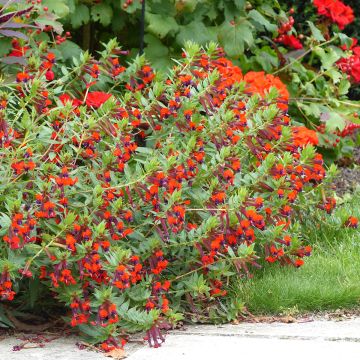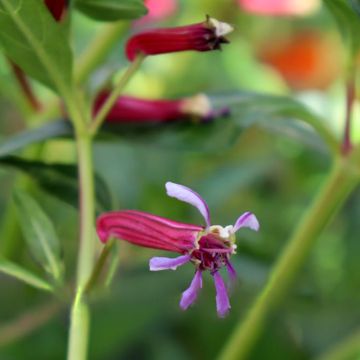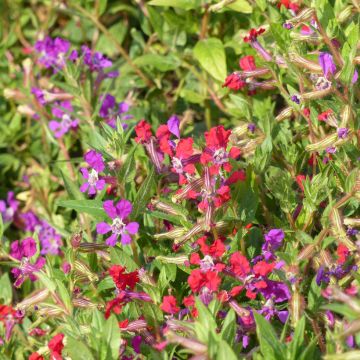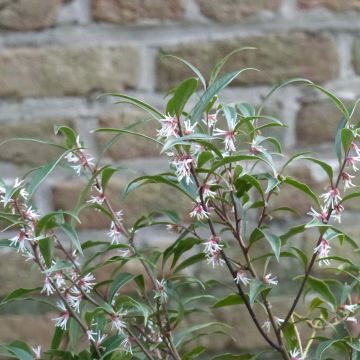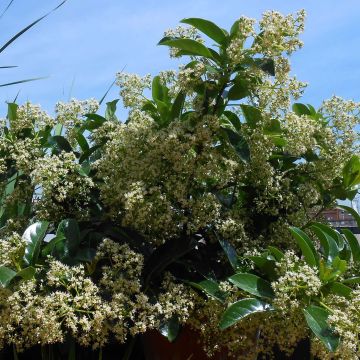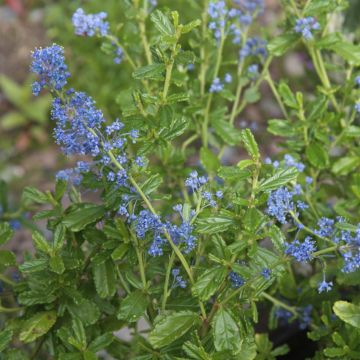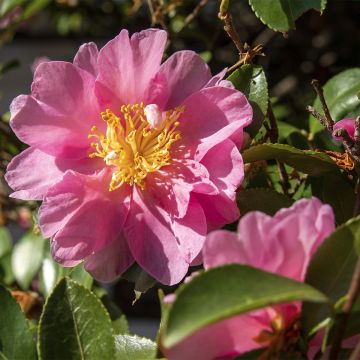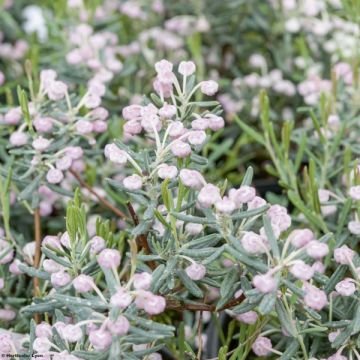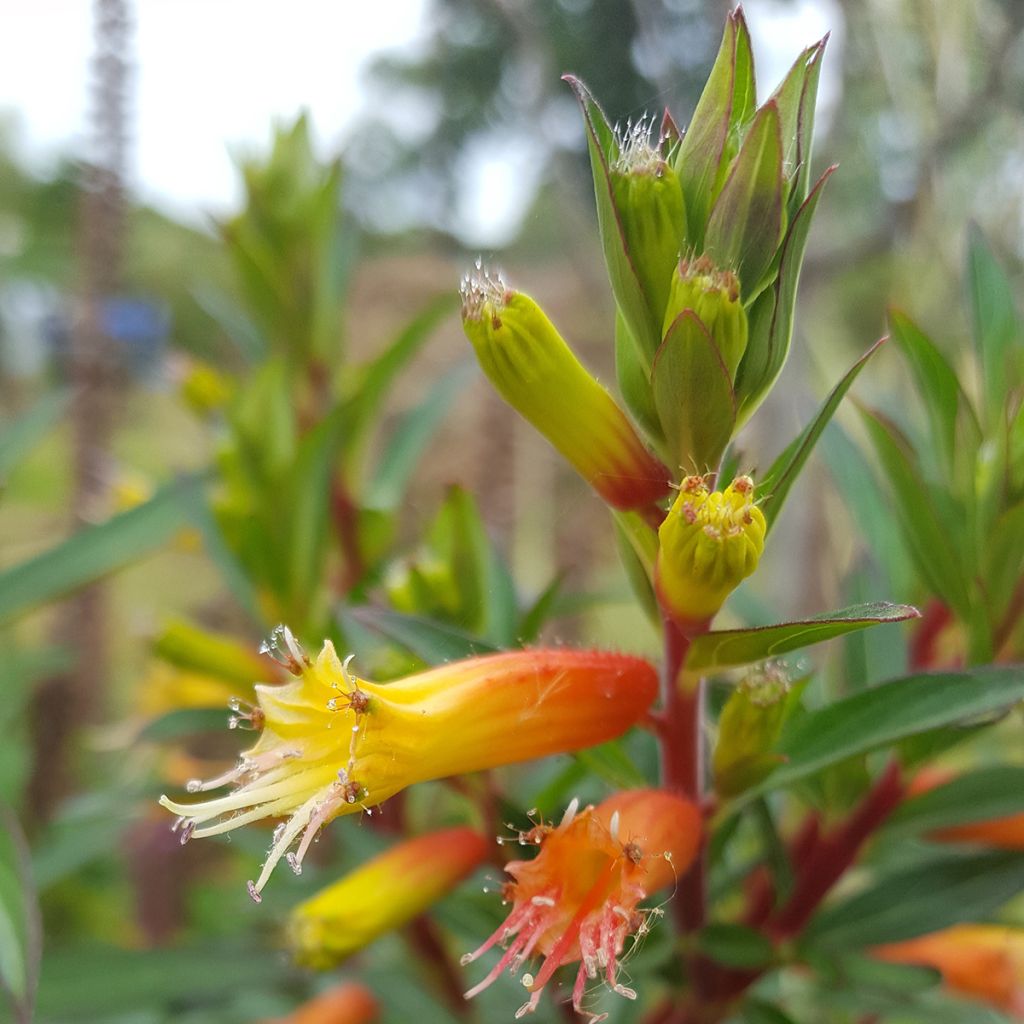

Cuphea micropetala
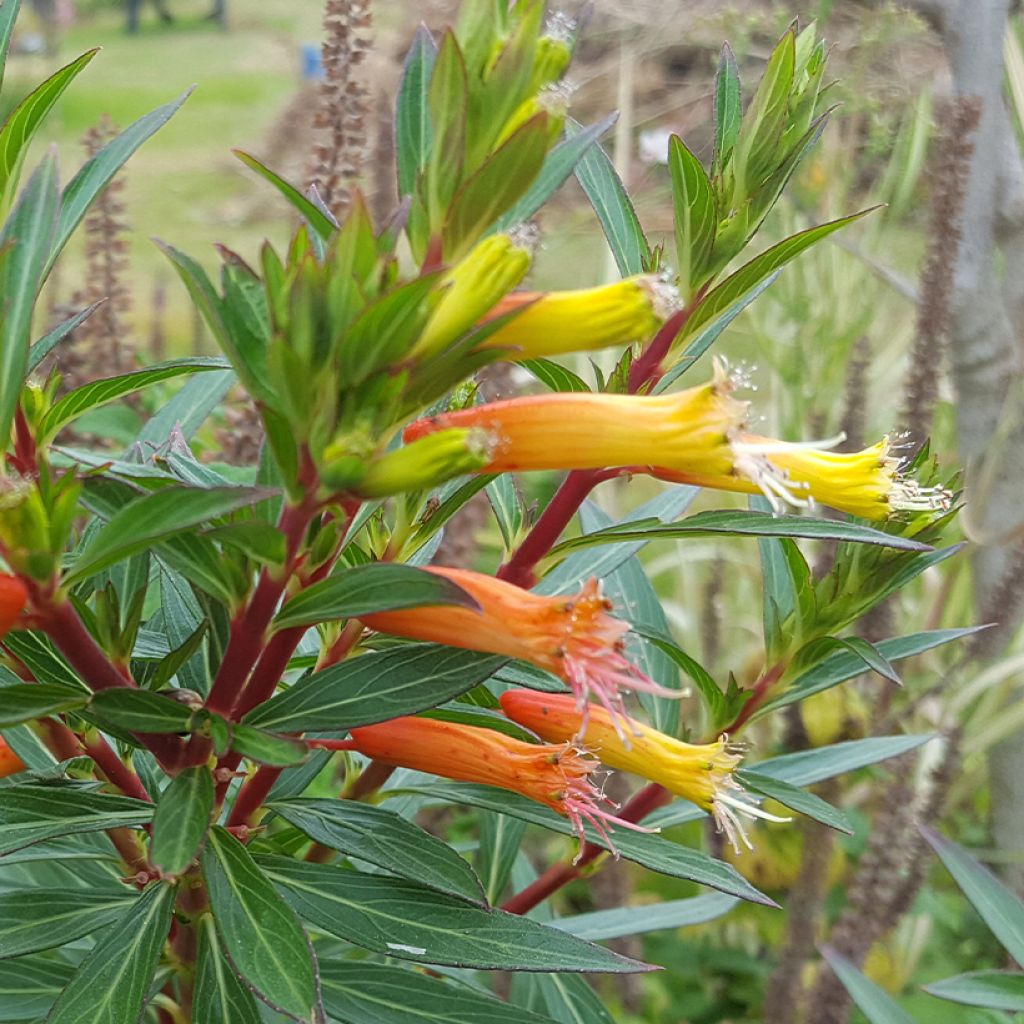

Cuphea micropetala
Cuphea micropetala
Cuphea micropetala
Candy Corn Plant, beetle sage
Why not try an alternative variety in stock?
View all →This plant carries a 12 months recovery warranty
More information
We guarantee the quality of our plants for a full growing cycle, and will replace at our expense any plant that fails to recover under normal climatic and planting conditions.
From €5.90 for pickup delivery and €6.90 for home delivery
Express home delivery from €8.90.
Does this plant fit my garden?
Set up your Plantfit profile →
Description
Cuphea micropetala, nicknamed "Cigar Plant", is an undershrub with numerous tubular flowers in vibrant shades of yellow, orange, and red. Its flowering period lasts from May until the first frost. Cut a few to brighten up your bouquets. Its dark green evergreen leaves provide a beautiful backdrop for its generous flowering. It forms a beautiful bushy clump that can reach 1m high and 60cm wide. It is not very hardy (-7°C), ideally plant it in full sun in a flower bed or a pot, especially if you live in a colder region. This way, you can easily protect it during the winter.
Cuphea is from the Lythraceae family and the genus includes more than 250 species native to South America, Central America, and the Pacific Islands. Cuphea micropetala is a species native to Mexico where it grows on riverbanks, in meadows, and at the edge of forests. It produces terminal clustered tubular flowers measuring 3 to 5 cm long. They are usually orange, tinged with yellow and red with prominent stamens. In our climates, flowering usually occurs from May until the first frost. Its dark green lanceolate leaves are evergreen and measure 6 to 12 cm in length. The Cigar Plant easily branches out and forms a bushy clump 50 cm to 1 m high and 60 cm wide. It can be regularly pruned to maintain its compact habit.
Cuphea micropetala creates a sensation in flower beds and pots. It tolerates drought once established. Pair it with a Phormium 'Flamingo' with orange tones or a Phormium 'Black Adder' with almost black purple foliage for a striking contrast with its flamboyant flowering. Consider Lantana camara Evita Red Imp. with its ball-shaped flowers ranging from yellow to bright orange or Abutilon 'Nabob' with dark red petals.
Report an error about the product description
Cuphea micropetala in pictures
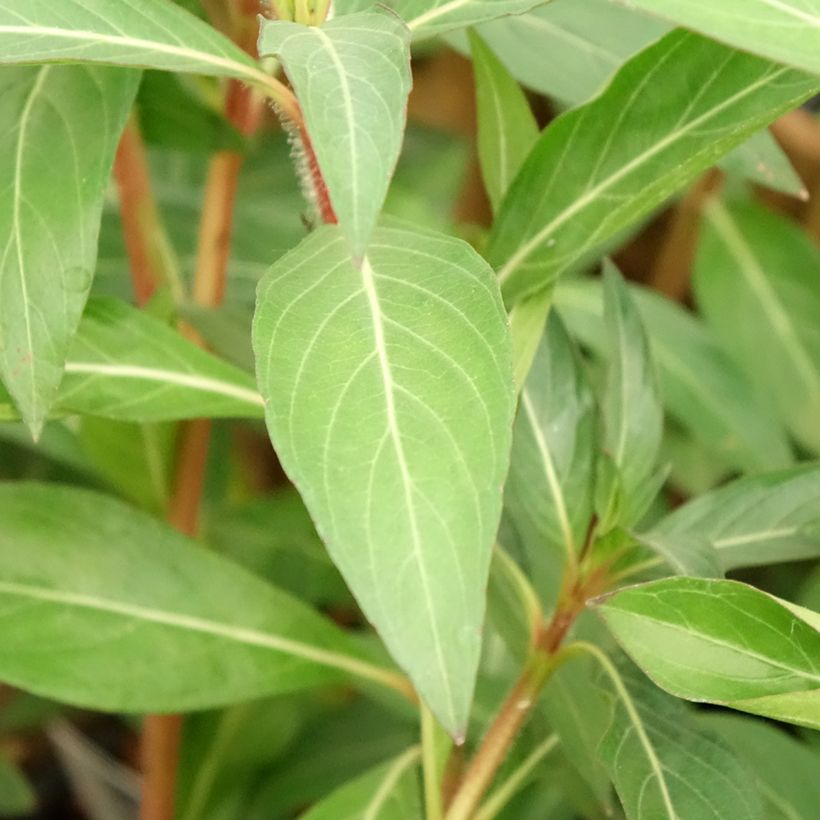

Flowering
Foliage
Plant habit
Botanical data
Cuphea
micropetala
Lythraceae
Candy Corn Plant, beetle sage
South America
Other Cuphea
Planting and care
Cuphea micropetala is a hardy undershrub, to -7°C. You have several options: use it as an annual plant for your flower beds and pots, grow it in a pot and bring it indoors or into a frost-free and bright location during winter, or, if you live in a mild region, grow it in the ground when mulching and winter protection may be necessary. In the ground, Cuphea appreciates a sunny or partially shaded exposure with afternoon sun. It needs at least 5 to 6 hours of sunlight per day to flower. A rich, fertile, moist, and well-drained soil suits it well. Once established, it tolerates drought well.
When grown in a container, water it regularly in summer, making sure to let the soil dry between waterings. Add a liquid fertiliser for flowering plants every 3 weeks to promote flowering.
Remove faded flowers as they appear. After flowering, prune to maintain a compact shape.
Planting period
Intended location
Care
This item has not been reviewed yet - be the first to leave a review about it.
Evergreen shrubs
Haven't found what you were looking for?
Hardiness is the lowest winter temperature a plant can endure without suffering serious damage or even dying. However, hardiness is affected by location (a sheltered area, such as a patio), protection (winter cover) and soil type (hardiness is improved by well-drained soil).

Photo Sharing Terms & Conditions
In order to encourage gardeners to interact and share their experiences, Promesse de fleurs offers various media enabling content to be uploaded onto its Site - in particular via the ‘Photo sharing’ module.
The User agrees to refrain from:
- Posting any content that is illegal, prejudicial, insulting, racist, inciteful to hatred, revisionist, contrary to public decency, that infringes on privacy or on the privacy rights of third parties, in particular the publicity rights of persons and goods, intellectual property rights, or the right to privacy.
- Submitting content on behalf of a third party;
- Impersonate the identity of a third party and/or publish any personal information about a third party;
In general, the User undertakes to refrain from any unethical behaviour.
All Content (in particular text, comments, files, images, photos, videos, creative works, etc.), which may be subject to property or intellectual property rights, image or other private rights, shall remain the property of the User, subject to the limited rights granted by the terms of the licence granted by Promesse de fleurs as stated below. Users are at liberty to publish or not to publish such Content on the Site, notably via the ‘Photo Sharing’ facility, and accept that this Content shall be made public and freely accessible, notably on the Internet.
Users further acknowledge, undertake to have ,and guarantee that they hold all necessary rights and permissions to publish such material on the Site, in particular with regard to the legislation in force pertaining to any privacy, property, intellectual property, image, or contractual rights, or rights of any other nature. By publishing such Content on the Site, Users acknowledge accepting full liability as publishers of the Content within the meaning of the law, and grant Promesse de fleurs, free of charge, an inclusive, worldwide licence for the said Content for the entire duration of its publication, including all reproduction, representation, up/downloading, displaying, performing, transmission, and storage rights.
Users also grant permission for their name to be linked to the Content and accept that this link may not always be made available.
By engaging in posting material, Users consent to their Content becoming automatically accessible on the Internet, in particular on other sites and/or blogs and/or web pages of the Promesse de fleurs site, including in particular social pages and the Promesse de fleurs catalogue.
Users may secure the removal of entrusted content free of charge by issuing a simple request via our contact form.
The flowering period indicated on our website applies to countries and regions located in USDA zone 8 (France, the United Kingdom, Ireland, the Netherlands, etc.)
It will vary according to where you live:
- In zones 9 to 10 (Italy, Spain, Greece, etc.), flowering will occur about 2 to 4 weeks earlier.
- In zones 6 to 7 (Germany, Poland, Slovenia, and lower mountainous regions), flowering will be delayed by 2 to 3 weeks.
- In zone 5 (Central Europe, Scandinavia), blooming will be delayed by 3 to 5 weeks.
In temperate climates, pruning of spring-flowering shrubs (forsythia, spireas, etc.) should be done just after flowering.
Pruning of summer-flowering shrubs (Indian Lilac, Perovskia, etc.) can be done in winter or spring.
In cold regions as well as with frost-sensitive plants, avoid pruning too early when severe frosts may still occur.
The planting period indicated on our website applies to countries and regions located in USDA zone 8 (France, United Kingdom, Ireland, Netherlands).
It will vary according to where you live:
- In Mediterranean zones (Marseille, Madrid, Milan, etc.), autumn and winter are the best planting periods.
- In continental zones (Strasbourg, Munich, Vienna, etc.), delay planting by 2 to 3 weeks in spring and bring it forward by 2 to 4 weeks in autumn.
- In mountainous regions (the Alps, Pyrenees, Carpathians, etc.), it is best to plant in late spring (May-June) or late summer (August-September).
The harvesting period indicated on our website applies to countries and regions in USDA zone 8 (France, England, Ireland, the Netherlands).
In colder areas (Scandinavia, Poland, Austria...) fruit and vegetable harvests are likely to be delayed by 3-4 weeks.
In warmer areas (Italy, Spain, Greece, etc.), harvesting will probably take place earlier, depending on weather conditions.
The sowing periods indicated on our website apply to countries and regions within USDA Zone 8 (France, UK, Ireland, Netherlands).
In colder areas (Scandinavia, Poland, Austria...), delay any outdoor sowing by 3-4 weeks, or sow under glass.
In warmer climes (Italy, Spain, Greece, etc.), bring outdoor sowing forward by a few weeks.

































